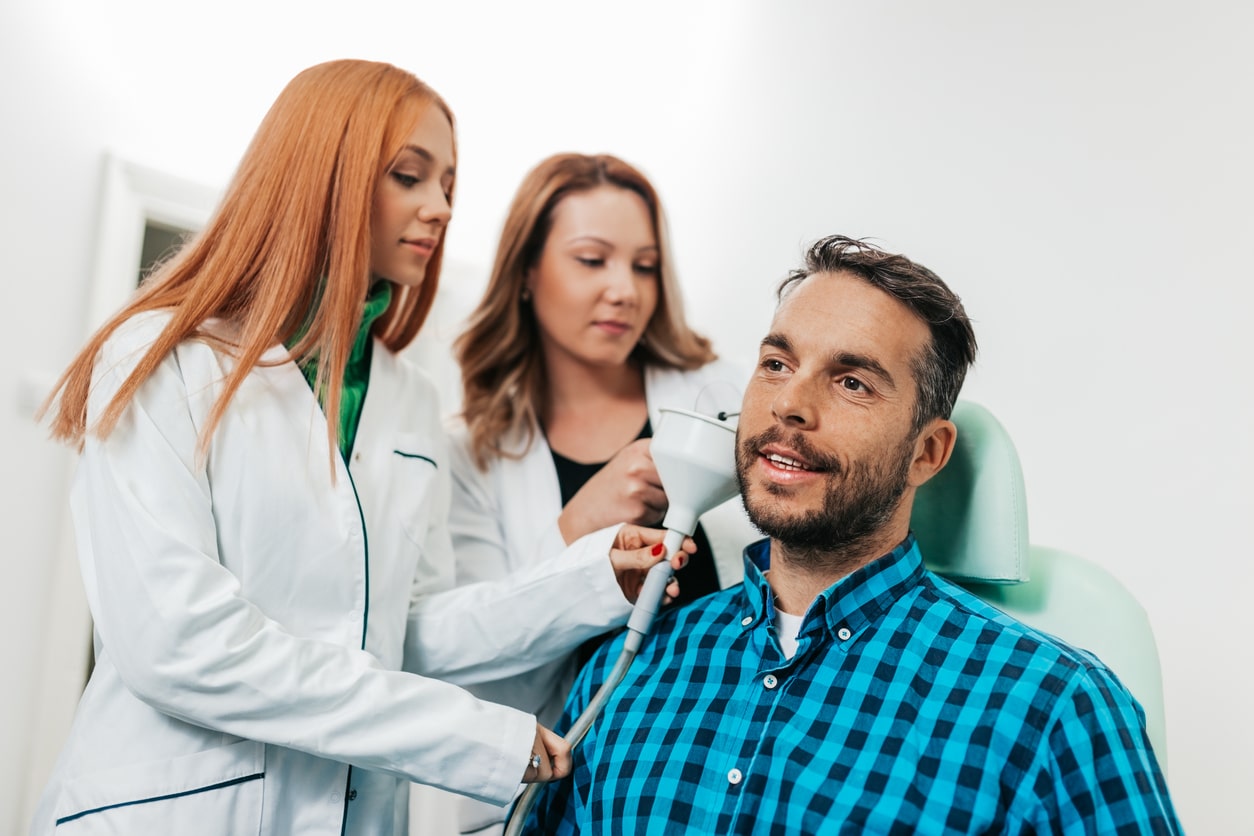While we often don’t think about earwax until we need to remove it, that sticky yellow substance plays a crucial role in maintaining ear health.
What’s the Purpose of Earwax?

Many people view earwax as dirty, prompting them to remove it frequently and in unsafe manners. But the truth is that earwax protects your ears from germs, dirt and bacteria, similar to how the mucus in your nose protects your respiratory health. In addition to trapping germs and dirt, wax carries dead skin cells out of the ear, waterproofs the canal lining and prevents the ears from drying out.
When Does Earwax Require Removal?
Earwax is self-regulating. In most cases, it does not require removal. However, there are times when excessive wax can build up due to trauma, scar tissue, objects in the ear or excessive hair. Excess earwax can cause blockages, also called impaction, and lead to symptoms including:
- Hearing loss
- Earache
- Infection
- Tinnitus (ringing in the ears)
- Itching
- A feeling of fullness in the ear
While impacted earwax can be frustrating, there are right and wrong ways to remove it. If you’re experiencing these symptoms, consult your ENT provider for safe removal methods.
Safe Methods for Earwax Removal
Depending on the severity of your earwax blockage, your provider may recommend one or more of the following removal methods:
- Over-the-counter ear drops. Ear drops are a popular and effective method for softening earwax, making it easier to remove. To use ear drops, tilt your head to one side and apply the recommended number of drops to the affected ear. Keep your head tilted for a few minutes to let the drops penetrate and soften the wax. Then, tilt your head in the opposite direction to let the liquid and dissolved wax drain out.
- Irrigation. Irrigation involves flushing the ear canal with water or saline to remove earwax. This method is often performed by ENT specialists, but home irrigation kits are also available. If your provider recommends home irrigation, fill the provided syringe with warm water or a saline solution. Gently squirt the solution into the ear canal while keeping your head tilted to the side. Allow the water to flow out, bringing the earwax with it.
- Manual removal. ENT specialists can safely remove earwax using curettes or suction devices. This method is recommended for those who have impacted earwax or are prone to buildup. Avoid using cotton swabs, hairpins, fingers or other objects to remove earwax, as these can push the wax further into the ear canal and cause perforation. A common rule of thumb is never to put anything larger than your elbow in your ear canal.
Remember, your earwax is vital to your ear health and should be treated with care. Never attempt at-home removal without consulting your ENT specialist first. For a consultation or professional cleaning, contact South Valley Ear Nose & Throat – West Jordan today.